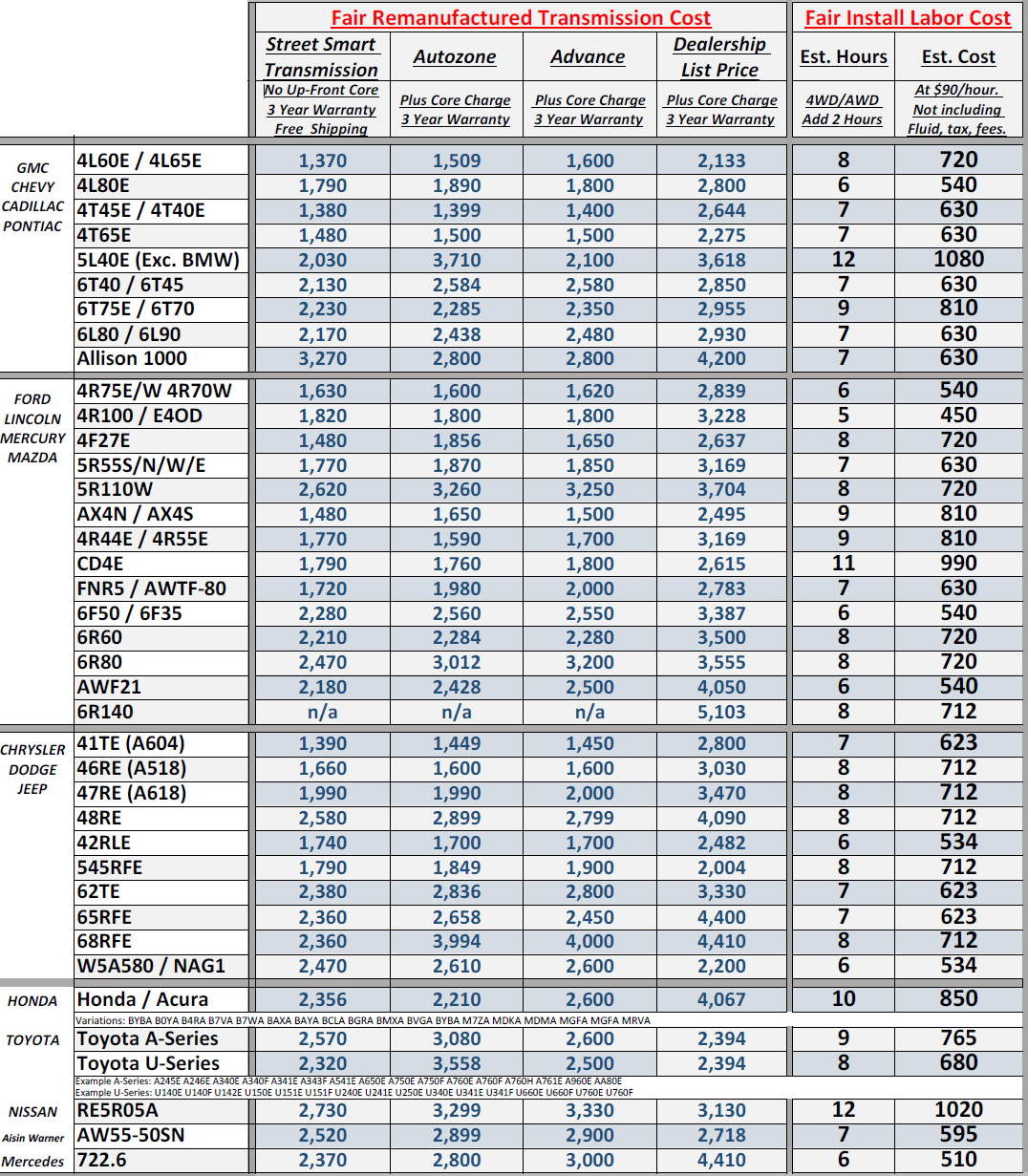Since you are saying this is a temperature-related issue — it would also certainly seem to be because it only happens on longer trips where the tranny remains relatively cool I’d like to suggest that you have the transmission cooler lines and transmission cooler itself also looked at. You see, the transmission, as I am sure you know, runs super-hot. That heat is not only needed to keep the unit’s internal pressure correct, but it is also needed to set up a natural fluid movement throughout the unit. There’s only so much movement that can be created by the torque converter. Much of the movement through the transmission is controlled by heat differentials. (Cooler fluid settles into areas of the transmission where it displaces much hotter fluid that has moved out of the way. The temperature differential is important for proper operation.)
Looking at how the transmission basically controls its temperatures, you find there are two ways. The first is the transmission case which acts much like the radiators in your home. The transmission jacket radiates the heat that is generated by the internals of the tranny. That heat is then transferred to the transmission fluid. In turn, the fluid’s contact with the case allows the heat within the fluid to transfer through the case to the atmosphere.
Working with the transmission case, the transmission radiator core takes the heated transmission fluid and pushes it through the many galleries in the tranny radiator core. That helps to also take the heat out of the transmission. A third way that also works with the tranny radiator core are the tranny cooling lines. They also take heated transmission fluid and push it through the radiator core to keep things cool.
Given all of this dependence on heat removal for proper operation all it takes is a crimp in a radiator return line or a piece of debris blocking a cooling gallery for first gear and you can have a transmission that acts in the manner you describe.
Here’s what you will have to have done to find the exact location of the problem. First, have your technician look at the transmission radiator core and its support radiator lines. Look carefully at the end of each line to ensure that there is no crimping that might impede coolant flow. If everything looks good here, you’ll have to have the transmission pulled out, properly drained and then taken down to the gallery level so that you can see if there are any blocked galleries. This is time-consuming work and requires your technician to run each gallery with a long, thin, snake-like device. This will not only clean each gallery but it will also find whatever might be causing the blockage. This level of cleaning and work may cost the better part of $4,000 because it is so labor intensive.
Here’s one alternative I usually don’t mention when dealing with transmission and that is a high-pressure flush. If you have had your transmission taken down to this level, then it makes sense to clean out all the galleries. Because you have removed things like the torque converter and other devices that are easily damaged by deposits or items like large metal filings and such, then it makes it easier to do the high-pressure flush to blow out any obstructions.
Again, this is not inexpensive as it will cost the better part of $3,000 for all of the work. But, if you want to keep the 1999 on the road, then it is worth the effort.
Good luck, let me know what happens.

